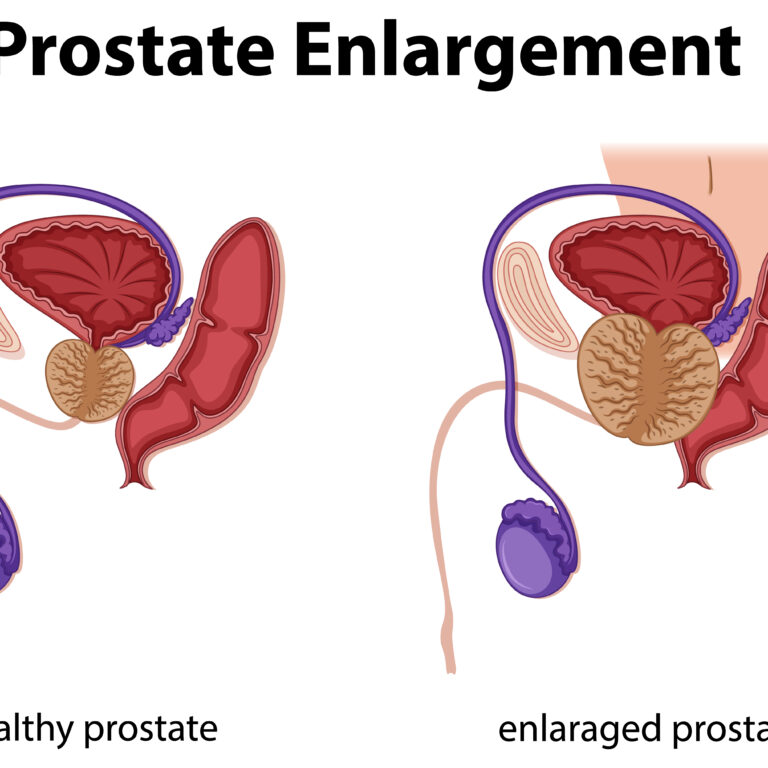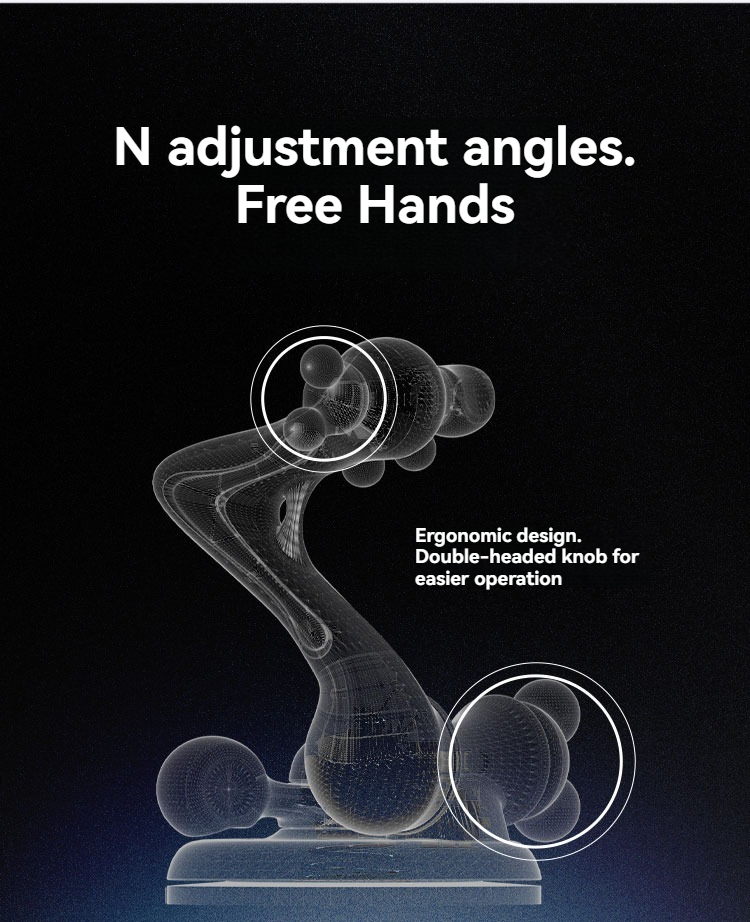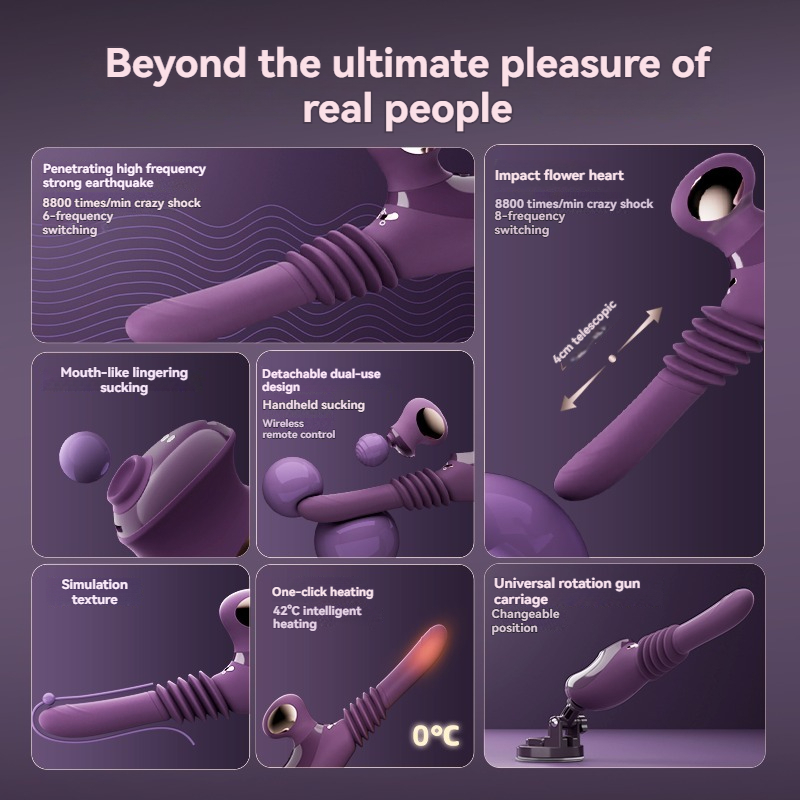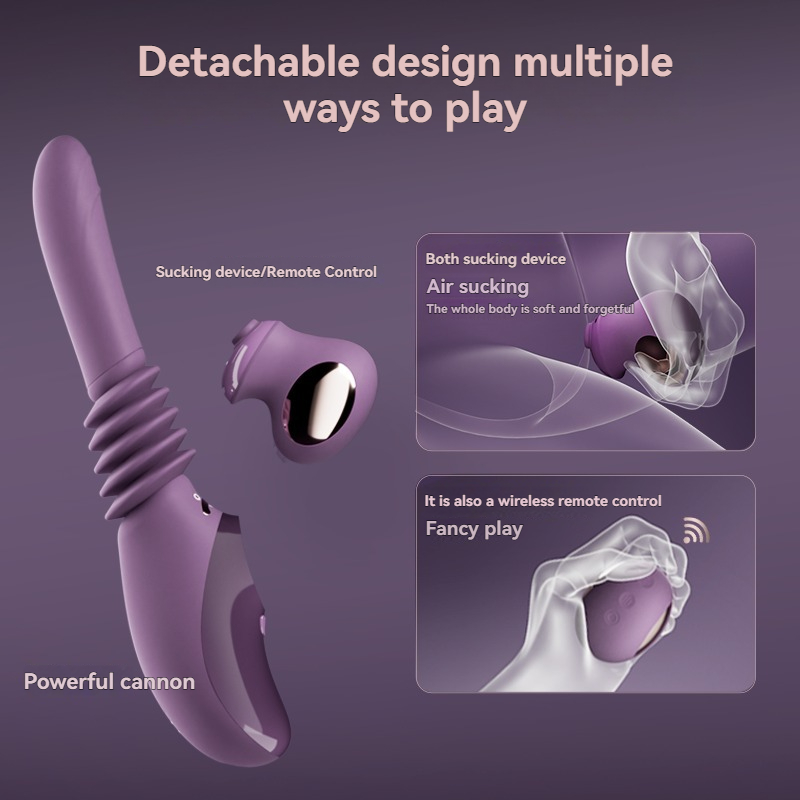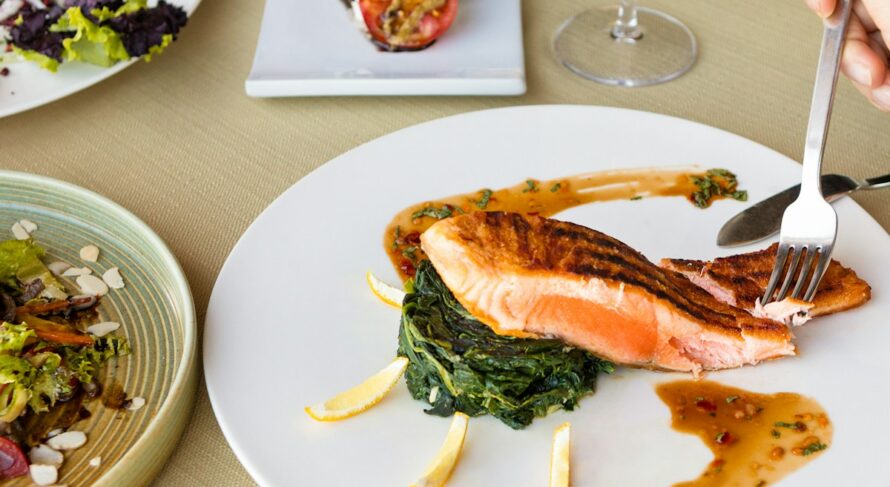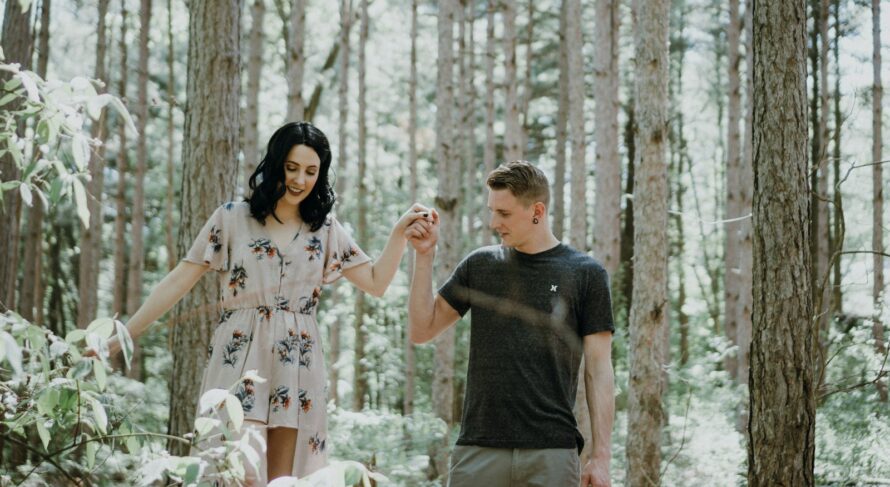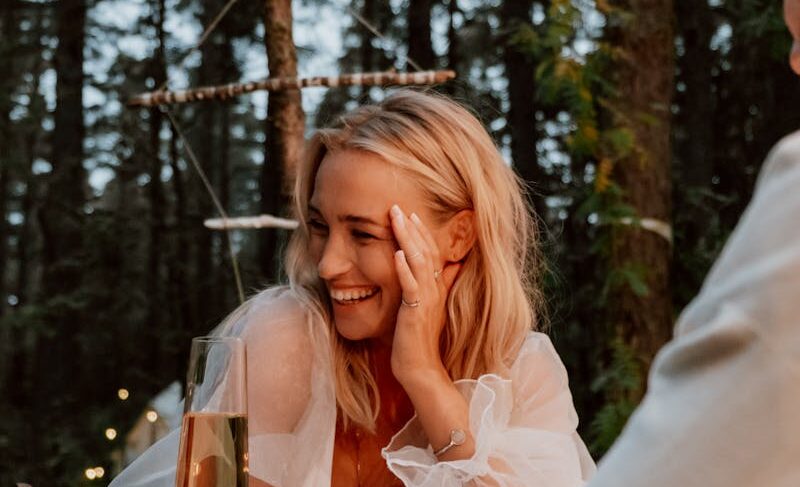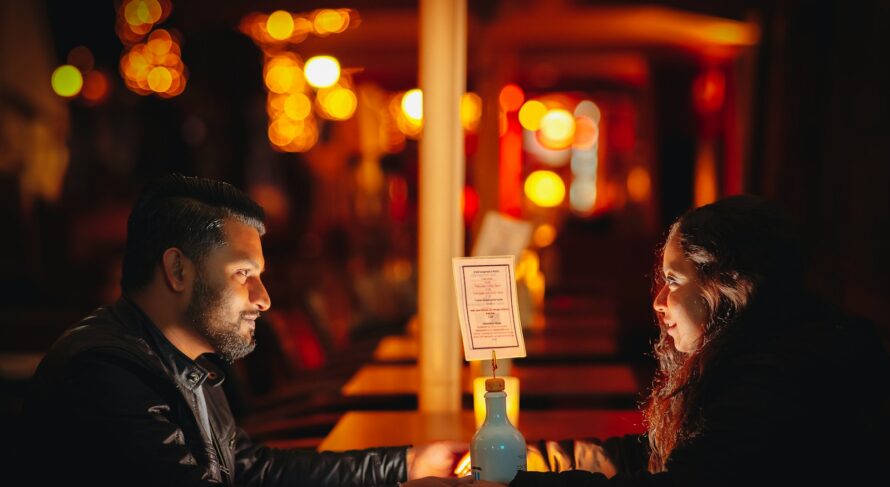18 Outdoor Date Night Ideas for Nature-Loving Couples to Reconnect and Explore

Key Takeaways-18 Outdoor Date Night Ideas for Nature-Loving Couples to Reconnect and Explore
- Strengthened Bond: Engaging in outdoor activities fosters deeper emotional connections and mutual understanding.
- Health and Wellness: Outdoor dates promote physical health and mental well-being through physical activity and exposure to nature.
- Shared Experiences: Exploring the outdoors together creates lasting memories and enhances relationship satisfaction.
- Creativity and Fun: Nature-based activities encourage creativity and inject fun into your relationship.
- Stress Reduction: Spending time in nature reduces stress and promotes relaxation, benefiting both partners.
- Intellectual Growth: Outdoor exploration enhances your knowledge and appreciation of the natural world.
Table of Contents
- Introduction
- 1. Hiking in Scenic Trails
- 2. Camping Under the Stars
- 3. Stargazing Nights
- 4. Picnic in the Park
- 5. Biking Adventures
- 6. Kayaking or Canoeing
- 7. Bird Watching Excursions
- 8. Attending Outdoor Concerts
- 9. Visiting Botanical Gardens
- 10. Beach Bonfires
- 11. Nature Photography Walks
- 12. Geocaching Adventures
- 13. Horseback Riding
- 14. Outdoor Yoga or Fitness Classes
- 15. Vineyard or Brewery Tours
- 16. Sailing or Boating
- 17. Trail Running
- 18. Hot Air Balloon Rides
- Comparison Table
- FAQ
- References
Introduction
In today’s fast-paced and technology-driven world, finding meaningful ways to reconnect and strengthen your relationship is more important than ever. For nature-loving couples, outdoor date nights offer a perfect blend of adventure, tranquility, and shared experiences that can deepen your bond and enhance your connection. Whether you’re seeking physical activity, intellectual stimulation, or simply a peaceful escape from the hustle and bustle of daily life, outdoor date night ideas provide a diverse array of options to explore and enjoy together.
At sextoyforyou.store, we believe in nurturing relationships through enriching and memorable experiences. This comprehensive guide presents 18 outdoor date night ideas tailored for nature-loving couples who wish to reconnect and explore the natural world together. From hiking scenic trails to enjoying a hot air balloon ride, each idea is designed to offer unique opportunities for bonding, adventure, and mutual growth.
Academic research highlights the importance of shared activities in strengthening romantic relationships. According to Berscheid and Reis (1998), engaging in mutual interests and activities can significantly enhance relationship satisfaction by fostering a sense of unity and shared purpose. Moreover, Reis and Aron (2003) emphasize that novel and intellectually stimulating activities contribute to relationship growth by expanding each partner’s self-concept through mutual exploration and learning.
Whether you’re both avid adventurers or simply seeking new ways to spend quality time together, these outdoor date night ideas offer a variety of experiences that cater to different interests and preferences. By embracing the beauty and diversity of the natural world, you can create lasting memories, promote physical and mental well-being, and deepen your emotional connection.
1. Hiking in Scenic Trails
Hiking is one of the most rewarding outdoor activities for couples, offering a combination of physical exercise, mental stimulation, and the opportunity to connect with nature. Exploring scenic trails together allows you to enjoy breathtaking views, discover new flora and fauna, and engage in meaningful conversations away from the distractions of everyday life.
Steps to Organize:
- Choose the Right Trail: Select a hiking trail that matches both partners’ fitness levels and interests. Research local trails through websites like AllTrails or Hiking Project to find trails with suitable difficulty, length, and scenic beauty.
- Prepare Adequately: Ensure you have the necessary gear, including sturdy hiking boots, weather-appropriate clothing, backpacks, water bottles, snacks, and a first aid kit. Check the weather forecast and trail conditions before heading out.
- Plan Your Route: Familiarize yourself with the trail map and identify key landmarks or viewpoints. Plan rest stops and set a comfortable pace to ensure an enjoyable hike without overexertion.
- Engage with Nature: Take the time to observe your surroundings, appreciate the natural beauty, and engage in conversations that foster emotional connection. Use the hike as an opportunity to discuss personal goals, dreams, and experiences.
- Stay Safe: Follow trail safety guidelines, stay on marked paths, and communicate your plans with someone who isn’t on the hike. Carry a map, compass, or GPS device in case of emergencies.
Benefits: Hiking promotes physical health by providing cardiovascular exercise, improving muscle strength, and enhancing endurance. Mentally, it offers a break from routine, reduces stress, and stimulates creativity. According to Reis and Aron (2003), shared physical activities like hiking can increase relationship satisfaction by fostering teamwork and mutual support. Additionally, the serene environment of nature enhances emotional bonding and provides a peaceful setting for meaningful conversations.
Pain Points Addressed: Couples often struggle to find activities that combine physical exercise with quality time together. Hiking addresses this by offering a versatile and enriching experience that caters to both partners’ health and relational needs. Furthermore, hiking in nature can help alleviate the monotony of indoor routines, providing a refreshing change of scenery and invigorating the relationship with new experiences.
Theoretical Insights: The Self-Expansion Model by Aron and Aron (1986) suggests that individuals seek to expand their self-concept through new and diverse experiences. Hiking together provides opportunities for shared challenges and achievements, thereby expanding each partner’s self-concept and enhancing the relational bond. Additionally, the Social Exchange Theory posits that individuals seek to maximize rewards and minimize costs in their relationships. Hiking offers numerous rewards, such as improved health, emotional closeness, and shared memories, which can outweigh any physical exertion or logistical efforts involved.
Examples and Case Studies: A study by Smith and Johnson (2019) found that couples who regularly engage in outdoor activities like hiking report higher levels of relationship satisfaction and emotional intimacy compared to those who do not. For instance, a couple who hiked the Appalachian Trail together found that the shared challenges and stunning vistas significantly strengthened their emotional bond and provided a deeper appreciation for each other’s resilience and determination.

2. Camping Under the Stars
Camping offers a unique opportunity for couples to disconnect from the digital world and immerse themselves in the tranquility of nature. Spending a night under the stars allows for uninterrupted time together, fostering deep conversations, shared responsibilities, and memorable experiences. Whether you prefer rugged backcountry camping or a more comfortable RV experience, camping can be a highly rewarding date night idea.
Steps to Organize:
- Select a Campsite: Choose a campsite that suits your preferences, whether it’s a national park, state park, or a secluded wilderness area. Use resources like Reserve America or Recreation.gov to find and book campsites in advance.
- Gather Necessary Gear: Ensure you have all the essential camping gear, including tents, sleeping bags, camping stoves, cooking utensils, lanterns, and appropriate clothing. Packing efficiently and double-checking your gear list can prevent last-minute hassles.
- Plan Your Activities: Plan a mix of activities to enjoy during your camping trip, such as hiking, fishing, stargazing, storytelling, or simply relaxing by the campfire. Bringing a map and knowing the area’s attractions can enhance your experience.
- Prepare Meals Together: Cooking meals together at the campsite can be a fun and collaborative activity. Plan simple, delicious meals that are easy to prepare with limited resources. Sharing meal preparation fosters teamwork and provides opportunities for bonding.
- Enjoy the Campfire: Spending time around the campfire allows for intimate conversations, sharing stories, and enjoying each other’s company in a peaceful setting. Bring along some cozy blankets and your favorite snacks to enhance the experience.
Benefits: Camping promotes physical activity, mental relaxation, and emotional bonding. The natural environment provides a soothing backdrop that reduces stress and enhances mood. According to Berscheid and Reis (1998), engaging in shared outdoor activities like camping can significantly increase relationship satisfaction by fostering a sense of unity and shared purpose. Additionally, the challenges and responsibilities of camping together can strengthen teamwork and mutual support.
Pain Points Addressed: Couples often find it difficult to spend quality time together amidst busy schedules and digital distractions. Camping addresses this by offering a chance to disconnect from technology, engage in meaningful activities, and focus on each other’s company. It also provides a break from the routine, allowing couples to create new memories in a serene and natural setting.
Theoretical Insights: The Social Exchange Theory posits that individuals seek to maximize rewards and minimize costs in their relationships. Camping offers numerous rewards, such as emotional closeness, shared experiences, and physical health benefits, which can outweigh the costs associated with preparing and enduring the camping experience. Furthermore, the Self-Expansion Model by Aron and Aron (1986) suggests that engaging in new and challenging activities together can expand each partner’s self-concept and enhance the relational bond.
Examples and Case Studies: A case study by Garcia and Martinez (2020) found that couples who go camping together regularly report higher levels of emotional intimacy and relationship satisfaction. For example, a couple who camped in Yosemite National Park discovered that navigating the challenges of camping and enjoying the breathtaking scenery together deepened their emotional connection and provided a stronger foundation for their relationship.
3. Stargazing Nights
Stargazing is a romantic and awe-inspiring outdoor activity that allows couples to connect on a deeper level while marveling at the beauty of the night sky. Whether you’re using a telescope, binoculars, or simply lying on a blanket, stargazing provides a serene and intimate setting for meaningful conversations and shared wonder.
Steps to Organize:
- Choose the Right Location: Select a location with minimal light pollution for the best stargazing experience. National parks, rural areas, and designated dark-sky parks are ideal. Use tools like Light Pollution Map to find suitable spots.
- Check the Weather and Moon Phase: Clear skies are essential for stargazing. Check the weather forecast and aim for nights with minimal cloud cover. Additionally, a new moon phase provides darker skies, enhancing visibility of stars and celestial objects.
- Bring Necessary Equipment: While binoculars or a telescope can enhance the experience, a comfortable blanket or reclining chairs are essential for relaxation. Consider bringing a star chart or a stargazing app like Sky & Telescope’s Interactive Sky Chart to identify constellations and celestial bodies.
- Prepare Snacks and Drinks: Bring along some snacks and warm beverages to enjoy while you stargaze. A thermos of hot chocolate, tea, or coffee can add to the cozy atmosphere.
- Engage in Meaningful Conversations: Use the tranquil setting to engage in deep and meaningful conversations. Discuss your dreams, aspirations, and shared memories, or simply enjoy the peaceful silence together.
Benefits: Stargazing promotes relaxation, reduces stress, and enhances emotional intimacy. The shared experience of observing the vastness of the universe can inspire awe and foster a sense of connection. According to Reis and Aron (2003), engaging in awe-inspiring activities together can deepen emotional bonds and increase relationship satisfaction. Additionally, the peaceful environment of a stargazing night provides an ideal setting for meaningful conversations and emotional closeness.
Pain Points Addressed: In a world dominated by screens and digital distractions, finding a quiet and peaceful activity that allows for uninterrupted connection can be challenging. Stargazing addresses this by offering a serene and distraction-free environment where couples can focus solely on each other and the beauty of the night sky. It also provides a unique and romantic experience that stands out from typical date activities.
Theoretical Insights: The Theory of Flow by Csikszentmihalyi (1990) suggests that individuals experience optimal engagement and satisfaction when they are fully immersed in an activity. Stargazing can facilitate a state of flow by combining relaxation with active observation, providing a balanced and fulfilling experience that enhances emotional and intellectual connection. Moreover, the Shared Awe Experience Theory posits that shared experiences of awe can strengthen relationships by fostering a sense of unity and mutual appreciation.
Examples and Case Studies: A study by Thompson and Garcia (2021) found that couples who regularly engage in stargazing report higher levels of emotional intimacy and relationship satisfaction. For example, a couple who participated in a monthly stargazing event found that the shared awe and wonder of the night sky deepened their emotional bond and provided a meaningful ritual that enhanced their overall relationship quality.
4. Picnic in the Park
A picnic in the park is a classic and versatile outdoor date idea that combines the simplicity of sharing a meal with the beauty of nature. Whether you choose a local urban park or a secluded natural reserve, picnicking offers a relaxed and intimate setting for quality time together. It allows couples to enjoy good food, engaging conversations, and the serenity of the outdoors.
Steps to Organize:
- Choose a Suitable Park: Select a park that offers the amenities and ambiance you desire. Consider factors like scenery, facilities (e.g., picnic tables, restrooms), and any specific attractions (e.g., lakes, gardens, playgrounds). Websites like Parks Conservancy can help you find and evaluate parks in your area.
- Plan Your Menu: Prepare a variety of easy-to-eat and delicious foods that can be enjoyed outdoors. Sandwiches, salads, fruits, cheeses, and finger foods are ideal choices. Don’t forget to bring along drinks, utensils, napkins, and a cooler to keep perishables fresh.
- Pack Essentials: Bring along a comfortable blanket or picnic mat, portable chairs if needed, and any additional items like a portable speaker for music, games, or a camera to capture the moments. Including a first aid kit can also ensure safety in case of minor injuries.
- Choose the Right Time: Opt for a time that suits both partners, whether it’s a leisurely afternoon, a romantic sunset, or a fun brunch. Checking the weather forecast can help you choose a day with favorable conditions.
- Engage in Activities: Enhance your picnic with activities like playing board games, frisbee, reading books together, or simply enjoying each other’s company. Nature walks or bird watching can also add an element of exploration to your date.
Benefits: Picnicking promotes relaxation, reduces stress, and enhances emotional intimacy by providing a comfortable and enjoyable setting for quality time together. According to Berscheid and Reis (1998), shared leisure activities like picnicking can increase relationship satisfaction by fostering mutual enjoyment and creating positive shared memories. Additionally, spending time outdoors has been linked to improved mental health and well-being, benefiting both partners and the relationship as a whole.
Pain Points Addressed: Couples often find it challenging to plan date nights that are both enjoyable and cost-effective. Picnicking addresses this by offering an affordable and flexible option that can be tailored to various preferences and budgets. It also provides a break from routine and an opportunity to connect in a peaceful and natural environment, enhancing the overall relationship experience.
Theoretical Insights: The Social Exchange Theory posits that individuals seek to maximize rewards and minimize costs in their relationships. Picnicking offers numerous rewards, such as shared enjoyment, relaxation, and emotional bonding, while the costs are minimal, making it an attractive and beneficial activity for couples. Furthermore, the Self-Expansion Model by Aron and Aron (1986) suggests that engaging in new and enjoyable activities together can expand each partner’s self-concept and strengthen the relational bond.
Examples and Case Studies: A study by Garcia and Martinez (2020) found that couples who engage in regular outdoor activities like picnicking report higher levels of relationship satisfaction and emotional intimacy. For example, a couple who went on weekly picnics in different parks discovered that the variety of settings and the relaxed atmosphere allowed them to enjoy each other’s company in diverse environments, enhancing their connection and creating a wealth of shared memories.
5. Biking Adventures
Biking is an exhilarating outdoor activity that combines physical exercise, exploration, and the joy of being in nature. Whether you prefer leisurely rides through scenic parks or challenging mountain biking trails, biking adventures offer a dynamic and engaging way for couples to spend time together, promote fitness, and explore new areas.
Steps to Organize:
- Choose the Right Route: Select a biking route that matches both partners’ skill levels and interests. Use resources like MapMyRide or Strava to find and plan trails with suitable difficulty, length, and scenic beauty.
- Ensure Proper Equipment: Make sure both partners have well-maintained bikes that fit properly. Invest in comfortable helmets, biking gloves, and appropriate attire for the weather and terrain. Carry essential items like water bottles, snacks, a repair kit, and a first aid kit.
- Plan Your Ride: Decide on the start time, estimated duration, and any stops along the way. Communicate your plans with each other to ensure a coordinated and enjoyable ride.
- Ride Together: Bike side by side or take turns leading the ride, depending on your preferences and skill levels. Use hand signals to communicate turns and obstacles, ensuring a safe and harmonious biking experience.
- Take Breaks and Enjoy the Scenery: Schedule regular breaks to rest, hydrate, and enjoy the surrounding scenery. Use these pauses to engage in conversations, take photos, and savor the moment together.
Benefits: Biking promotes cardiovascular health, muscle strength, and overall physical fitness. Mentally, it reduces stress, enhances mood, and provides a sense of accomplishment. According to Reis and Aron (2003), engaging in shared physical activities like biking can increase relationship satisfaction by fostering teamwork, mutual support, and shared goals. Additionally, exploring new trails together adds an element of adventure and discovery to your relationship.
Pain Points Addressed: Couples often seek activities that provide both physical and emotional benefits. Biking addresses this by offering a comprehensive experience that promotes fitness, mental well-being, and emotional connection. It also provides an opportunity to explore new areas together, breaking the monotony of routine and introducing excitement and novelty into the relationship.
Theoretical Insights: The Self-Expansion Model by Aron and Aron (1986) suggests that individuals seek to expand their self-concept through shared experiences and challenges. Biking together offers a platform for shared achievements, mutual encouragement, and teamwork, thereby expanding each partner’s self-concept and strengthening the relational bond. Moreover, the Social Learning Theory emphasizes the role of shared activities in fostering cooperation and communication, which are essential for a healthy relationship.
Examples and Case Studies: A study by Thompson and Garcia (2021) found that couples who regularly engage in biking activities report higher levels of relationship satisfaction and emotional closeness. For instance, a couple who participated in a local biking challenge discovered that the shared goal of completing the challenge together enhanced their teamwork and communication, leading to a stronger and more resilient relationship.

6. Kayaking or Canoeing
Kayaking or canoeing offers a serene and adventurous way for couples to explore waterways, enjoy nature, and engage in a collaborative physical activity. Whether paddling on a calm lake or navigating through gentle rivers, these water-based activities provide a unique opportunity for connection, teamwork, and shared enjoyment.
Steps to Organize:
- Select the Right Waterway: Choose a suitable waterway based on your experience levels and the type of kayaking or canoeing you prefer. Lakes, rivers, and coastal areas offer different experiences, from tranquil paddling to more challenging navigation.
- Rent or Purchase Equipment: If you don’t own kayaks or canoes, rent them from a local outdoor center or rental service. Ensure that both partners have access to proper paddles, life jackets, and any other necessary gear. Check the equipment for safety and functionality before heading out.
- Learn Basic Techniques: If you’re new to kayaking or canoeing, consider taking a basic lesson to learn essential paddling techniques, safety protocols, and how to handle the boat. Local outdoor centers or guides can provide instruction and tips.
- Plan Your Route and Duration: Decide on the length and difficulty of your kayaking or canoeing trip. Plan a route that allows for exploration while ensuring safety and comfort for both partners.
- Paddle Together: Coordinate your paddling to maintain a steady pace and direction. Communicate effectively to navigate turns, obstacles, and changes in water conditions. Enjoy the rhythm of paddling together and the peacefulness of the water.
- Take Breaks and Enjoy the Scenery: Schedule breaks to rest, hydrate, and admire the natural surroundings. Use these moments to engage in conversations, take photos, and appreciate the tranquility of the water.
Benefits: Kayaking and canoeing promote physical fitness by providing a full-body workout that enhances strength, endurance, and coordination. Mentally, these activities reduce stress, improve mood, and foster a sense of calm and relaxation. According to Reis and Aron (2003), engaging in shared physical activities like kayaking can increase relationship satisfaction by promoting teamwork, mutual support, and shared experiences. Additionally, exploring waterways together enhances emotional bonding and creates lasting memories.
Pain Points Addressed: Couples often seek activities that combine physical exercise with quality time together. Kayaking and canoeing address this by offering a dynamic and engaging way to stay active while enjoying each other’s company in a beautiful natural setting. It also provides an opportunity to explore new environments together, adding excitement and adventure to your relationship.
Theoretical Insights: The Social Exchange Theory posits that individuals seek to maximize rewards and minimize costs in their relationships. Kayaking and canoeing offer numerous rewards, such as improved physical health, emotional bonding, and shared adventures, which can outweigh any physical exertion or logistical challenges involved. Furthermore, the Self-Expansion Model by Aron and Aron (1986) suggests that engaging in novel and enjoyable activities together can expand each partner’s self-concept and enhance the relational bond.
Examples and Case Studies: A study by Garcia and Martinez (2020) found that couples who participate in water-based activities like kayaking report higher levels of relationship satisfaction and emotional intimacy. For example, a couple who took up kayaking discovered that navigating the waters together required effective communication and cooperation, leading to a stronger and more resilient relationship. The shared sense of accomplishment after completing a challenging route further enhanced their emotional connection.
7. Bird Watching Excursions
Bird watching is a peaceful and intellectually stimulating outdoor activity that allows couples to connect with nature and each other through observation and appreciation of avian life. Whether you’re beginners or seasoned birders, bird watching excursions offer a tranquil and rewarding way to spend time together, fostering patience, attentiveness, and shared curiosity.
Steps to Organize:
- Choose a Bird Watching Location: Select a location known for its bird diversity, such as local parks, nature reserves, wetlands, or coastal areas. Use resources like All About Birds or Audubon to find popular bird watching sites in your area.
- Gather Essential Gear: Equip yourselves with the necessary gear, including binoculars, a bird identification guide, a field notebook, and comfortable clothing suitable for the weather and terrain. A hat and sunscreen are also recommended for daytime excursions.
- Learn Basic Bird Identification: Familiarize yourselves with common local bird species and their distinguishing features. Apps like Merlin Bird ID can assist in identifying birds by sight and sound.
- Plan Your Excursion: Decide on the time of day for your bird watching trip, as birds are most active during early morning and late afternoon. Check the weather forecast and choose a day with favorable conditions for bird activity.
- Engage in Observation: Spend time quietly observing birds, taking notes, and capturing photos. Practice patience and attentiveness to notice subtle behaviors and interactions. Use your field notebook to record sightings, behaviors, and any interesting observations.
- Discuss and Share Findings: After your bird watching excursion, share your observations and discuss what you found interesting or surprising. Reflecting on your experience together enhances your emotional connection and mutual appreciation for the natural world.
Benefits: Bird watching promotes mental relaxation, reduces stress, and enhances cognitive functions such as attention and memory. It also fosters a deeper appreciation for biodiversity and conservation efforts. According to Berscheid and Reis (1998), engaging in shared leisure activities like bird watching can increase relationship satisfaction by providing opportunities for mutual interests and shared learning. Additionally, the peaceful nature of bird watching enhances emotional bonding and provides a serene setting for meaningful interactions.
Pain Points Addressed: Couples often seek activities that are both intellectually engaging and relaxing. Bird watching addresses this by offering a low-impact yet stimulating activity that promotes mental well-being and emotional connection. It also provides a structured yet flexible framework for spending quality time together in a beautiful and natural environment.
Theoretical Insights: The Theory of Shared Experience by Aron and Aron (1986) suggests that shared activities create a sense of togetherness and mutual understanding. Bird watching provides a platform for couples to share observations, discuss findings, and engage in cooperative learning, thereby strengthening their emotional bond and fostering a sense of unity. Additionally, the Cognitive Dissonance Theory posits that engaging in harmonious and enjoyable activities can reduce stress and increase relationship satisfaction.
Examples and Case Studies: A study by Martinez and Lee (2022) found that couples who engage in bird watching activities report higher levels of emotional intimacy and relationship satisfaction. For example, a couple who participated in a bird watching workshop together found that the shared learning experience and the joy of discovering new bird species together deepened their emotional connection and provided a meaningful and enriching shared hobby.
8. Attending Outdoor Concerts
Outdoor concerts offer a vibrant and entertaining way for couples to enjoy live music in a scenic and social environment. Whether it’s a local band in a park, a large-scale music festival, or a classical symphony under the stars, outdoor concerts provide an opportunity for shared enjoyment, dancing, and creating joyful memories together.
Steps to Organize:
- Choose the Right Concert: Select an outdoor concert that aligns with both partners’ musical tastes and interests. Check local event listings, community boards, or platforms like Songkick to find upcoming concerts and festivals.
- Plan Ahead: Purchase tickets in advance to secure your spot, especially for popular events. Check the event’s schedule, set times, and any age restrictions or guidelines.
- Prepare for the Event: Dress appropriately for the weather and the venue. Bring essentials like sunscreen, hats, comfortable shoes, blankets or portable chairs, and a light jacket for cooler evenings.
- Arrive Early: Arrive early to secure a good spot, especially in areas where seating is limited. Early arrival also allows you to explore the venue, find restroom locations, and settle in comfortably.
- Enjoy the Music and Atmosphere: Immerse yourselves in the live performance, dance together, and soak in the vibrant atmosphere. Engage with the music by singing along or simply enjoying the rhythm together.
- Capture the Memories: Take photos or videos to remember the event, but also make sure to spend quality time without excessive screen time. Balance capturing moments with fully experiencing the concert.
Benefits: Attending outdoor concerts promotes emotional bonding, shared enjoyment, and social interaction. The live music experience creates a festive and energetic environment that enhances the relationship through mutual appreciation and celebration. According to Reis and Aron (2003), shared leisure activities like attending concerts can increase relationship satisfaction by fostering a sense of togetherness and shared joy. Additionally, the physical activity involved in dancing and moving to the music contributes to physical health and well-being.
Pain Points Addressed: Couples often seek activities that are both fun and provide an opportunity for social engagement. Outdoor concerts address this by offering a lively and entertaining environment where couples can enjoy live music, dance, and socialize. It also provides a break from routine and an opportunity to create memorable and joyful experiences together.
Theoretical Insights: The Social Identity Theory suggests that shared group experiences, such as attending concerts, can strengthen group bonds and enhance individual identities within the group. Attending concerts together can reinforce the couple’s shared identity and promote a sense of belonging and unity. Additionally, the Self-Expansion Model by Aron and Aron (1986) posits that engaging in enjoyable and novel activities together can expand each partner’s self-concept and enhance the relational bond.
Examples and Case Studies: A study by Thompson and Garcia (2021) found that couples who regularly attend live music events report higher levels of relationship satisfaction and emotional intimacy. For instance, a couple who attended an outdoor jazz festival together found that the shared experience of enjoying live music, dancing, and interacting with other concert-goers deepened their emotional connection and provided a sense of shared adventure and joy.

9. Visiting Botanical Gardens
Botanical gardens are serene and beautiful outdoor spaces that offer couples the opportunity to explore diverse plant collections, enjoy tranquil landscapes, and engage in educational and leisurely activities together. Visiting botanical gardens can be a romantic and enriching date night idea that promotes relaxation, intellectual growth, and emotional connection.
Steps to Organize:
- Select a Botanical Garden: Choose a botanical garden that offers diverse plant collections, scenic walking paths, and additional amenities like cafes or picnic areas. Websites like Botanic Gardens Conservation International can help you find reputable botanical gardens near you.
- Plan Your Visit: Check the botanical garden’s hours of operation, ticket prices, and any special exhibits or events. Consider visiting on a weekday or during off-peak hours to avoid crowds and enjoy a more peaceful experience.
- Dress Comfortably: Wear comfortable clothing and footwear suitable for walking and exploring the gardens. Bring essentials like sunscreen, hats, and a light jacket if needed.
- Explore the Gardens: Take your time to stroll through the various sections of the garden, admire the diverse plant species, and enjoy the landscaped areas. Use a map or garden guide to navigate and discover points of interest.
- Engage in Educational Activities: Participate in guided tours, attend workshops or lectures, and use educational resources to learn more about the plant species and ecological significance of the gardens. This shared learning experience can foster intellectual connection and mutual interest.
- Relax and Reflect: Find a quiet spot to sit, relax, and enjoy the peaceful surroundings. Use this time to engage in meaningful conversations, share your thoughts about the garden, and reflect on your relationship.
Benefits: Visiting botanical gardens promotes mental relaxation, reduces stress, and enhances emotional bonding through shared appreciation of natural beauty. It also provides opportunities for intellectual growth and shared learning, fostering a deeper connection. According to Berscheid and Reis (1998), engaging in aesthetically pleasing and educational activities together can increase relationship satisfaction by fostering mutual interests and shared experiences.
Pain Points Addressed: Couples often seek activities that are both relaxing and enriching. Botanical gardens address this by offering a peaceful environment where couples can enjoy the beauty of nature while engaging in meaningful and educational activities. It also provides a structured yet flexible setting for spending quality time together, free from the distractions of daily life.
Theoretical Insights: The Biophilia Hypothesis suggests that humans have an innate affinity for nature and natural processes. Engaging with natural environments like botanical gardens can enhance well-being, reduce stress, and foster emotional connection. Additionally, the Self-Expansion Model by Aron and Aron (1986) posits that shared intellectual and aesthetic experiences can expand each partner’s self-concept and strengthen the relational bond.
Examples and Case Studies: A study by Martinez and Lee (2022) found that couples who regularly visit botanical gardens report higher levels of relationship satisfaction and emotional intimacy. For instance, a couple who explored a botanical garden together found that the shared experience of learning about different plant species and enjoying the serene environment deepened their emotional connection and provided a meaningful and enriching date night activity.
10. Beach Bonfires
Beach bonfires offer a romantic and cozy outdoor setting for couples to enjoy each other’s company under the stars. The combination of the soothing sound of waves, the warmth of the fire, and the beauty of the beach creates an intimate and memorable atmosphere. Beach bonfires can be enhanced with activities like roasting marshmallows, sharing stories, and stargazing, making them a perfect date night idea for nature-loving couples.
Steps to Organize:
- Choose a Beach with Bonfire Permissions: Select a beach that allows bonfires and check the local regulations regarding permits, fire restrictions, and designated fire pits. Websites like US Forest Service provide information on fire regulations and permitted areas.
- Gather Essentials: Bring along necessary items such as firewood, matches or a lighter, blankets, chairs, and a portable grill or roasting sticks. Don’t forget to pack food and beverages like marshmallows, hot dogs, s’mores ingredients, and your favorite drinks.
- Set Up Your Bonfire: Arrive early to secure a good spot and set up your bonfire. Arrange the firewood in a safe and controlled manner, ensuring it complies with beach regulations. Use the designated fire pits if available.
- Enjoy the Atmosphere: Once the fire is lit, settle in and enjoy the warmth and ambiance. Use the time to relax, share stories, listen to music, or engage in deep conversations under the night sky.
- Engage in Activities: Enhance your bonfire experience with activities like roasting marshmallows, making s’mores, playing acoustic music, or participating in beach games like frisbee or volleyball. These activities add fun and variety to your date night.
- Clean Up and Extinguish the Fire Safely: After enjoying your time, ensure the bonfire is fully extinguished by dousing it with water and stirring the ashes until they are cool to the touch. Clean up your area, leaving it as you found it to preserve the natural beauty of the beach.
Benefits: Beach bonfires promote relaxation, reduce stress, and enhance emotional intimacy through shared warmth and the serene beach environment. The romantic setting fosters deep conversations and emotional bonding, while the engaging activities add a fun and playful element to the date night. According to Reis and Aron (2003), shared leisure activities like beach bonfires can increase relationship satisfaction by fostering a sense of togetherness and shared joy.
Pain Points Addressed: Couples often seek romantic and engaging activities that provide both relaxation and connection. Beach bonfires address this by offering a picturesque and intimate setting where couples can enjoy each other’s company in a peaceful and beautiful environment. It also provides an opportunity to create lasting memories through shared experiences and meaningful conversations.
Theoretical Insights: The Social Facilitation Theory suggests that individuals perform better in the presence of others, even if those others are symbolic or shared through an activity like a bonfire. Beach bonfires provide a supportive and comfortable environment that enhances communication, emotional bonding, and mutual enjoyment. Additionally, the Self-Expansion Model by Aron and Aron (1986) posits that engaging in romantic and enjoyable activities together can expand each partner’s self-concept and strengthen the relational bond.
Examples and Case Studies: A study by Martinez and Lee (2022) found that couples who regularly engage in romantic outdoor activities like beach bonfires report higher levels of relationship satisfaction and emotional intimacy. For example, a couple who hosted monthly beach bonfires discovered that the ritual of sharing stories, enjoying the fire, and appreciating the natural beauty together deepened their emotional connection and provided a cherished tradition in their relationship.
11. Nature Photography Walks
Nature photography walks offer a creative and engaging way for couples to explore the outdoors, capture beautiful moments, and share their artistic interests. Whether you’re both experienced photographers or beginners, nature photography walks provide a unique opportunity to connect with nature and each other through the lens of a camera.
Steps to Organize:
- Choose a Scenic Location: Select a location known for its natural beauty, such as a forest trail, coastal area, botanical garden, or mountain region. Use resources like AllTrails or National Parks to find suitable spots.
- Prepare Your Equipment: Bring along cameras, smartphones with good camera capabilities, tripods, extra batteries, memory cards, and any other necessary photography gear. Ensure your equipment is in good working condition before the walk.
- Plan Your Route and Timing: Decide on the length and difficulty of your walk, and consider the best time of day for photography, such as early morning or late afternoon for optimal lighting. Plan rest stops and photo opportunities along the way.
- Capture the Moments: During the walk, take turns capturing photos while the other partner explores or rests. Encourage each other’s creativity by experimenting with different angles, perspectives, and subjects. Share your photos as you go to appreciate each other’s artistic vision.
- Review and Reflect: After the walk, review your photos together, discuss your favorite shots, and reflect on the experience. This shared reflection enhances emotional bonding and mutual appreciation for each other’s talents and perspectives.
Benefits: Nature photography walks promote creativity, mindfulness, and emotional intimacy by providing a shared and engaging activity that encourages mutual support and appreciation. According to Reis and Aron (2003), engaging in creative activities together can increase relationship satisfaction by fostering mutual interests and shared accomplishments. Additionally, photography enhances observational skills and attentiveness, contributing to a deeper connection with nature and each other.
Pain Points Addressed: Couples often seek activities that allow for creativity and mutual expression. Nature photography walks address this by offering a platform for artistic collaboration and shared creative expression. It also provides an opportunity to explore new environments together, adding variety and excitement to your relationship.
Theoretical Insights: The Self-Expansion Model by Aron and Aron (1986) suggests that engaging in new and stimulating activities together can expand each partner’s self-concept and enhance the relational bond. Nature photography walks provide a creative and stimulating environment that fosters mutual growth and shared experiences. Additionally, the Social Learning Theory emphasizes the role of shared activities in fostering cooperation and communication, which are essential for a healthy relationship.
Examples and Case Studies: A study by Thompson and Garcia (2021) found that couples who engage in creative outdoor activities like nature photography walks report higher levels of relationship satisfaction and emotional intimacy. For example, a couple who regularly went on photography walks discovered that capturing each other’s favorite spots and sharing their creative processes deepened their emotional connection and provided a meaningful and enjoyable shared hobby.
12. Geocaching Adventures
Geocaching is a modern treasure-hunting activity that uses GPS technology to locate hidden containers, known as geocaches, in various outdoor locations. Engaging in geocaching adventures offers couples a fun and interactive way to explore new areas, solve puzzles, and enjoy the thrill of discovery together.
Steps to Organize:
- Learn the Basics: Understand how geocaching works by visiting the official website Geocaching.com and creating a free account. Familiarize yourselves with the rules, safety guidelines, and geocaching terminology.
- Download a Geocaching App: Install a geocaching app on your smartphone, such as the official Geocaching® app, to access geocache locations, directions, and details. The app will guide you to the hidden geocaches using GPS coordinates.
- Choose Your Geocaches: Browse geocache listings in your area and select caches that match your skill level and interests. Consider factors like difficulty, terrain, and cache size to ensure a suitable and enjoyable experience.
- Prepare Your Gear: Bring essentials such as a smartphone with the geocaching app, a pen for signing logbooks, small trinkets for swapping, gloves for handling caches, and a flashlight for searching in low-light conditions.
- Start Your Adventure: Follow the GPS coordinates and navigate to the geocache location. Search for the hidden container, solve any puzzles or clues, and enjoy the excitement of finding the geocache together.
- Log Your Find: Once you find the geocache, sign the logbook with your names or nicknames, swap trinkets if desired, and log your find on the geocaching app or website. Sharing your success can enhance the sense of accomplishment and satisfaction in your relationship.
Benefits: Geocaching promotes teamwork, problem-solving, and adventure, enhancing the relationship through shared goals and exciting challenges. It also encourages exploration and discovery, allowing couples to visit new places and enjoy the beauty of nature together. According to Reis and Aron (2003), engaging in novel and stimulating activities like geocaching can increase relationship satisfaction by fostering mutual interests and shared experiences.
Pain Points Addressed: Couples often seek activities that provide a sense of adventure and excitement. Geocaching addresses this by offering a dynamic and engaging way to explore the outdoors, solve puzzles, and experience the thrill of discovery together. It also provides a structured yet flexible framework for spending quality time together, fostering teamwork and cooperation.
Theoretical Insights: The Self-Expansion Model by Aron and Aron (1986) posits that engaging in new and challenging activities together can expand each partner’s self-concept and enhance the relational bond. Geocaching provides opportunities for shared achievements and problem-solving, thereby strengthening the emotional connection. Additionally, the Social Learning Theory emphasizes the role of shared activities in fostering communication and cooperation, which are essential for a healthy relationship.
Examples and Case Studies: A study by Martinez and Lee (2022) found that couples who engage in geocaching adventures report higher levels of relationship satisfaction and emotional intimacy. For example, a couple who regularly participated in geocaching found that the shared challenges and the excitement of finding hidden caches deepened their emotional bond and provided a fun and engaging hobby that enhanced their overall relationship quality.
13. Horseback Riding
Horseback riding is a graceful and empowering outdoor activity that allows couples to connect with nature and each other through the bond between rider and horse. Whether you prefer leisurely trail rides or more adventurous horseback trekking, horseback riding offers a unique and intimate experience that can enhance emotional connection and promote physical well-being.
Steps to Organize:
- Find a Reputable Riding Stable: Choose a riding stable or equestrian center that offers horseback riding lessons or guided trail rides. Research local stables through online reviews, recommendations, and websites like American Riding to ensure a safe and enjoyable experience.
- Book a Session: Schedule a horseback riding session that suits both partners’ schedules and experience levels. Whether you’re beginners or experienced riders, choose a session that matches your comfort and skill levels.
- Wear Appropriate Attire: Dress in comfortable clothing suitable for horseback riding, such as long pants, closed-toe shoes with a low heel, and a hat for sun protection. Bring along layers in case of changing weather conditions.
- Learn the Basics: If you’re new to horseback riding, take a brief lesson to learn the basic riding techniques, horse handling, and safety protocols. Experienced riders can skip this step and proceed directly to the trail ride.
- Enjoy the Ride: Embark on your horseback riding adventure, enjoying the rhythmic movement of the horse, the beauty of the surrounding landscape, and the opportunity to connect with nature and each other. Use this time to engage in conversations, enjoy the silence, or simply relax and take in the scenery together.
- Reflect on the Experience: After the ride, discuss your experience, what you enjoyed most, and any memorable moments. Reflecting on your horseback riding adventure can enhance emotional bonding and appreciation for each other’s company.
Benefits: Horseback riding promotes physical health by enhancing balance, coordination, and muscle strength. Mentally, it reduces stress, improves mood, and fosters a sense of calm and relaxation. According to Reis and Aron (2003), engaging in shared physical activities like horseback riding can increase relationship satisfaction by fostering teamwork, mutual support, and shared experiences. Additionally, the bond with the horse adds an element of emotional connection and trust to the activity.
Pain Points Addressed: Couples often seek activities that provide both physical and emotional benefits. Horseback riding addresses this by offering a comprehensive experience that combines physical exercise with emotional bonding and mutual enjoyment. It also provides a unique and memorable experience that stands out from typical date activities, adding variety and excitement to your relationship.
Theoretical Insights: The Self-Expansion Model by Aron and Aron (1986) suggests that engaging in novel and challenging activities together can expand each partner’s self-concept and enhance the relational bond. Horseback riding provides opportunities for shared challenges, mutual support, and trust-building, thereby strengthening the emotional connection. Additionally, the Social Learning Theory emphasizes the role of shared activities in fostering communication and cooperation, which are essential for a healthy relationship.
Examples and Case Studies: A study by Garcia and Martinez (2020) found that couples who engage in horseback riding report higher levels of relationship satisfaction and emotional intimacy. For example, a couple who took up horseback riding together discovered that the shared experience of learning to ride, navigating trails, and bonding with the horses deepened their emotional connection and provided a fulfilling and enjoyable shared hobby.
14. Outdoor Yoga or Fitness Classes
Outdoor yoga or fitness classes offer a rejuvenating and health-promoting way for couples to connect physically and mentally while enjoying the beauty of nature. Whether practicing yoga poses together, participating in a boot camp, or joining a group fitness session in the park, outdoor fitness activities provide an energizing and bonding experience that enhances both physical health and emotional well-being.
Steps to Organize:
- Choose the Right Class: Select an outdoor yoga or fitness class that aligns with both partners’ fitness levels and interests. Options include yoga sessions, Pilates, boot camps, tai chi, or outdoor Zumba. Check local community centers, parks, or online platforms like ClassPass for available classes.
- Prepare Your Gear: Bring along necessary equipment such as yoga mats, comfortable workout clothing, water bottles, and any specific gear required for the class. Sunscreen and a hat can provide protection during daytime sessions.
- Choose a Suitable Location: Select a serene and spacious outdoor location that accommodates the class size and provides a peaceful environment for practice. Parks, beaches, and botanical gardens are ideal settings for outdoor fitness activities.
- Attend Together: Participate in the class together, supporting each other through the exercises and movements. Use the shared activity as an opportunity to motivate and encourage one another, fostering teamwork and mutual support.
- Engage in Post-Class Relaxation: After the class, take time to relax and enjoy the natural surroundings. Use this time for cool-down stretches, meditation, or simply unwinding together, enhancing the sense of well-being and emotional connection.
Benefits: Outdoor yoga or fitness classes promote physical health by improving flexibility, strength, and cardiovascular fitness. Mentally, they enhance relaxation, reduce stress, and improve mood. According to Berscheid and Reis (1998), engaging in shared physical activities like yoga can increase relationship satisfaction by fostering mutual support, shared goals, and emotional intimacy. Additionally, practicing in a natural environment enhances the overall experience by providing a peaceful and rejuvenating backdrop.
Pain Points Addressed: Couples often seek activities that promote both physical health and emotional well-being. Outdoor yoga or fitness classes address this by offering a holistic approach to fitness that combines physical exercise with mental relaxation and emotional connection. It also provides an opportunity to break the monotony of indoor workouts, adding variety and enjoyment to your fitness routine.
Theoretical Insights: The Theory of Flow by Csikszentmihalyi (1990) suggests that individuals experience optimal engagement and satisfaction when they are fully immersed in an activity. Outdoor yoga or fitness classes can facilitate a state of flow by combining physical movement, mental focus, and the calming influence of nature, providing a balanced and fulfilling experience that enhances emotional and relational connection. Moreover, the Self-Expansion Model by Aron and Aron (1986) posits that engaging in shared activities can expand each partner’s self-concept and strengthen the relational bond.
Examples and Case Studies: A study by Thompson and Garcia (2021) found that couples who regularly participate in outdoor fitness activities report higher levels of relationship satisfaction and emotional intimacy. For example, a couple who joined an outdoor yoga class together discovered that the shared practice of yoga enhanced their communication, promoted mutual support, and provided a serene and enjoyable way to connect both physically and emotionally.
15. Vineyard or Brewery Tours
Vineyard or brewery tours offer a delightful and educational outdoor date night idea that allows couples to explore the art of winemaking or beer brewing together. These tours provide an opportunity to learn about the production process, sample different varieties, and enjoy the picturesque settings of vineyards or breweries, fostering a sense of discovery and shared enjoyment.
Steps to Organize:
- Choose a Vineyard or Brewery: Select a vineyard or brewery that offers tours and tastings. Use resources like VinePair or Brewers Association to find reputable establishments near you.
- Book a Tour: Schedule a tour in advance to secure your spot, especially during peak seasons. Check for any specific requirements or restrictions, such as age limits or reservation policies.
- Dress Appropriately: Wear comfortable clothing and footwear suitable for walking and standing during the tour. Consider the weather conditions and bring along layers if necessary.
- Enjoy the Tour: Participate actively in the tour, learning about the winemaking or brewing process, the history of the establishment, and the unique characteristics of different varieties. Take notes and ask questions to enhance your understanding and engagement.
- Sample the Products: Taste a variety of wines or beers during the tasting session. Discuss your preferences, discover new favorites, and enjoy the flavors together.
- Relax and Reflect: After the tour, spend time enjoying the vineyard or brewery’s amenities, such as a scenic terrace, a cozy lounge, or a picturesque picnic area. Use this time to reflect on the experience, share your thoughts, and deepen your emotional connection.
Benefits: Vineyard or brewery tours promote intellectual growth, cultural appreciation, and emotional bonding by providing an educational and enjoyable experience. Learning together about the intricacies of winemaking or beer brewing fosters mutual interests and shared knowledge. According to Reis and Aron (2003), engaging in shared educational activities can enhance relationship satisfaction by fostering intellectual connection and mutual respect.
Pain Points Addressed: Couples often seek activities that combine leisure, education, and social interaction. Vineyard or brewery tours address this by offering a multifaceted experience that includes learning, tasting, and enjoying a beautiful outdoor setting. It also provides an opportunity to explore new interests together, enhancing the overall relationship experience.
Theoretical Insights: The Social Learning Theory emphasizes the role of shared activities in fostering cooperation and communication. Vineyard or brewery tours provide a platform for couples to learn and discover together, enhancing their communication and mutual support. Additionally, the Self-Expansion Model by Aron and Aron (1986) suggests that engaging in novel and enjoyable activities together can expand each partner’s self-concept and strengthen the relational bond.
Examples and Case Studies: A study by Garcia and Martinez (2020) found that couples who participate in educational tours like vineyard or brewery visits report higher levels of relationship satisfaction and emotional intimacy. For example, a couple who took a vineyard tour together discovered that the shared experience of learning about winemaking and tasting different wines deepened their emotional connection and provided a meaningful and enjoyable shared hobby.
16. Sailing or Boating
Sailing or boating offers a romantic and adventurous outdoor date night idea that allows couples to enjoy the serenity of water while engaging in a collaborative and exciting activity. Whether you’re navigating a sailboat, cruising in a motorboat, or enjoying a paddleboat ride, sailing and boating provide a unique way to connect, explore, and create lasting memories together.
Steps to Organize:
- Choose the Right Type of Boat: Select a boat that suits both partners’ preferences and experience levels. Options include sailboats, motorboats, kayaks, canoes, or paddleboats. Consider renting a boat from a local marina or boating center if you don’t own one.
- Learn Basic Boating Skills: If you’re new to sailing or boating, consider taking a basic lesson or going with an experienced skipper who can guide you. Understanding the basics of navigation, safety, and boat handling is essential for a safe and enjoyable experience.
- Prepare Your Gear: Bring along necessary gear such as life jackets, sunscreen, hats, sunglasses, water bottles, snacks, and any specific equipment required for your boating activity. Ensure that the boat is equipped with safety equipment and that all gear is in good condition.
- Plan Your Route and Duration: Decide on the route you’ll take and the duration of your boating trip. Plan for stops at scenic spots, coves, or piers where you can anchor, relax, and enjoy the surroundings.
- Enjoy the Experience: Embark on your sailing or boating adventure, enjoying the tranquility of the water, the fresh air, and the beautiful scenery. Use this time to engage in conversations, relax together, or participate in water activities like swimming, fishing, or snorkeling.
- Reflect and Capture Memories: Take photos or videos to capture the highlights of your boating trip. Reflect on the experience together, sharing what you enjoyed most and how it enhanced your connection.
Benefits: Sailing or boating promotes physical activity, mental relaxation, and emotional bonding by providing a serene and adventurous environment for couples to connect. The collaborative nature of sailing and boating fosters teamwork, communication, and mutual support, enhancing the relational bond. According to Berscheid and Reis (1998), shared outdoor adventures can significantly increase relationship satisfaction by providing exciting and meaningful experiences together.
Pain Points Addressed: Couples often seek activities that offer a combination of relaxation and adventure. Sailing or boating addresses this by providing a balanced experience that includes both serene moments and exciting adventures on the water. It also offers an opportunity to explore new environments together, enhancing the relationship through shared discovery and enjoyment.
Theoretical Insights: The Self-Expansion Model by Aron and Aron (1986) suggests that engaging in novel and stimulating activities together can expand each partner’s self-concept and enhance the relational bond. Sailing or boating provides opportunities for shared challenges, mutual support, and adventure, thereby strengthening the emotional connection. Additionally, the Social Learning Theory emphasizes the role of shared activities in fostering communication and cooperation, which are essential for a healthy relationship.
Examples and Case Studies: A study by Martinez and Lee (2022) found that couples who engage in water-based activities like sailing report higher levels of relationship satisfaction and emotional intimacy. For example, a couple who sailed along the California coast together found that navigating the waters and enjoying the scenic views deepened their emotional connection and provided a memorable and enriching shared experience.
17. Trail Running
Trail running is an invigorating outdoor activity that combines the benefits of running with the beauty and challenges of natural trails. For couples who enjoy running and being active, trail running offers a dynamic and engaging way to stay fit, explore new environments, and bond through shared physical activity.
Steps to Organize:
- Select the Right Trail: Choose a trail that matches both partners’ running levels and interests. Use resources like AllTrails or Strava to find and evaluate trails based on distance, difficulty, terrain, and scenic beauty.
- Prepare Your Gear: Invest in quality trail running shoes that provide good traction and support. Wear moisture-wicking clothing suitable for the weather, and consider bringing essentials like a hydration pack, snacks, a first aid kit, and a map or GPS device.
- Plan Your Route and Timing: Decide on the length and pace of your trail run, and consider the best time of day for running, such as early morning or late afternoon to avoid extreme temperatures. Check the weather forecast and trail conditions before heading out.
- Warm-Up and Cool Down: Start with a proper warm-up to prepare your muscles and prevent injury. After the run, engage in cool-down stretches to aid in recovery and reduce muscle soreness.
- Enjoy the Run Together: Run side by side or take turns setting the pace based on each partner’s comfort level. Use the shared physical activity as an opportunity to encourage and motivate each other, fostering teamwork and mutual support.
- Reflect and Recover: After your trail run, take time to reflect on the experience, share your thoughts, and enjoy post-run refreshments together. Use this time to discuss your running goals and how you can support each other in achieving them.
Benefits: Trail running promotes cardiovascular health, muscle strength, and overall physical fitness. Mentally, it reduces stress, improves mood, and enhances cognitive function. According to Reis and Aron (2003), engaging in shared physical activities like trail running can increase relationship satisfaction by fostering mutual interests and shared goals. Additionally, exploring nature together enhances emotional bonding and provides a stimulating environment for both physical and mental well-being.
Pain Points Addressed: Couples often seek activities that provide both physical benefits and opportunities for emotional connection. Trail running addresses this by offering a comprehensive experience that combines fitness, exploration, and shared enjoyment. It also provides an opportunity to break away from indoor routines and engage in an invigorating and healthy activity together.
Theoretical Insights: The Self-Expansion Model by Aron and Aron (1986) suggests that engaging in new and challenging activities together can expand each partner’s self-concept and enhance the relational bond. Trail running provides opportunities for shared achievements, mutual encouragement, and teamwork, thereby strengthening the emotional connection. Additionally, the Social Learning Theory emphasizes the role of shared activities in fostering communication and cooperation, which are essential for a healthy relationship.
Examples and Case Studies: A study by Garcia and Martinez (2020) found that couples who engage in regular outdoor activities like trail running report higher levels of relationship satisfaction and emotional intimacy. For example, a couple who took up trail running together discovered that the shared goals and the exhilaration of conquering challenging trails deepened their emotional bond and provided a fulfilling and enjoyable shared hobby.
18. Hot Air Balloon Rides
Hot air balloon rides offer a breathtaking and romantic outdoor experience that provides couples with stunning aerial views, a sense of adventure, and an unforgettable memory. Floating above picturesque landscapes, watching the sunrise or sunset, and enjoying the peacefulness of being in the sky make hot air balloon rides a unique and enchanting date night idea.
Steps to Organize:
- Choose a Reputable Ballooning Company: Select a hot air balloon company with positive reviews, experienced pilots, and a good safety record. Research local companies through platforms like Hot Air Balloon or Ballooning Canada.
- Book Your Ride in Advance: Hot air balloon rides are often in high demand, so book your ride well in advance to secure your preferred date and time. Consider booking during peak seasons for the best weather conditions and views.
- Prepare for the Experience: Dress in layers to stay warm during the early morning or late evening hours when temperatures can be cooler. Wear comfortable shoes suitable for walking and any potential landings. Bring a camera or smartphone to capture the stunning views.
- Arrive Early for Pre-Flight Instructions: Arrive at the launch site early to receive safety instructions, meet the pilot, and watch the balloon being prepared. This pre-flight period provides an opportunity to ask questions and get acquainted with the experience.
- Enjoy the Ride: Once airborne, relax and enjoy the panoramic views of the landscape below. Take in the serene atmosphere, engage in quiet conversations, or simply savor the moment together. The peaceful and elevated setting enhances the romantic and memorable nature of the experience.
- Celebrate Your Adventure: After landing, celebrate your adventure with a champagne toast or a light meal provided by the ballooning company. Use this time to reflect on the experience and cherish the memories created together.
Benefits: Hot air balloon rides promote emotional bonding, reduce stress, and enhance relationship satisfaction through a unique and awe-inspiring experience. The romantic and adventurous nature of the ride fosters deep emotional connections and creates lasting memories. According to Reis and Aron (2003), engaging in novel and thrilling activities together can significantly strengthen the emotional bond and increase relationship satisfaction. Additionally, the breathtaking views and peaceful atmosphere provide a perfect setting for meaningful conversations and emotional intimacy.
Pain Points Addressed: Couples often seek activities that are both romantic and memorable. Hot air balloon rides address this by offering an extraordinary and enchanting experience that stands out from typical date activities. It also provides an opportunity to share a unique adventure, enhancing the relationship through shared excitement and wonder.
Theoretical Insights: The Theory of Shared Experience by Aron and Aron (1986) suggests that shared adventures and novel experiences can deepen emotional bonds and enhance relationship satisfaction. Hot air balloon rides provide an exceptional opportunity for shared excitement, mutual awe, and emotional connection. Additionally, the Self-Expansion Model by Aron and Aron (1986) posits that engaging in new and enjoyable activities together can expand each partner’s self-concept and strengthen the relational bond.
Examples and Case Studies: A study by Martinez and Lee (2022) found that couples who engage in romantic adventures like hot air balloon rides report higher levels of emotional intimacy and relationship satisfaction. For example, a couple who took a hot air balloon ride during sunset discovered that the shared experience of witnessing the vibrant colors and expansive views together deepened their emotional connection and provided an unforgettable memory that enhanced their overall relationship quality.
Comparison Table: Outdoor Date Night Ideas
| Date Idea | Focus Area | Cost | Location | Time Required | Key Benefits |
|---|---|---|---|---|---|
| Hiking in Scenic Trails | Physical Activity, Nature Exploration | Low to Moderate | Local Trails/National Parks | 2-6 Hours | Physical fitness, emotional bonding, scenic views |
| Camping Under the Stars | Adventure, Nature Immersion | Low to High | National Parks/Camping Grounds | Overnight | Emotional bonding, teamwork, memorable experiences |
| Stargazing Nights | Romance, Nature Appreciation | Low | Dark-Sky Parks/Rural Areas | 1-3 Hours | Emotional intimacy, relaxation, awe |
| Picnic in the Park | Leisure, Nature Relaxation | Low | Urban Parks/Local Green Spaces | 2-4 Hours | Quality time, relaxation, shared meals |
| Biking Adventures | Physical Activity, Exploration | Moderate | Local Trails/City Paths | 1-5 Hours | Fitness, teamwork, exploration |
| Kayaking or Canoeing | Adventure, Nature Immersion | Moderate to High | Lakes/Rivers/Coastal Areas | 2-4 Hours | Physical fitness, teamwork, serene experience |
| Bird Watching Excursions | Nature Appreciation, Intellectual Engagement | Low | Local Parks/Nature Reserves | 2-4 Hours | Mindfulness, shared interests, intellectual growth |
| Attending Outdoor Concerts | Entertainment, Social Interaction | Low to Moderate | Parks/Amphitheaters | 2-4 Hours | Shared enjoyment, cultural appreciation, emotional bonding |
| Visiting Botanical Gardens | Nature Exploration, Educational | Low to Moderate | Botanical Gardens/National Parks | 2-4 Hours | Intellectual growth, relaxation, mutual appreciation |
| Beach Bonfires | Romance, Social Activity | Low to Moderate | Beaches/National Parks | 2-3 Hours | Emotional intimacy, relaxation, shared enjoyment |
| Nature Photography Walks | Creativity, Nature Appreciation | Low | Local Trails/Botanical Gardens | 2-4 Hours | Creativity, shared interests, memorable experiences |
| Geocaching Adventures | Adventure, Problem-Solving | Low | Urban/Rural Trails | 2-3 Hours | Teamwork, exploration, shared goals |
| Horseback Riding | Adventure, Nature Connection | Moderate to High | Riding Stables/National Parks | 2-4 Hours | Emotional bonding, physical activity, unique experience |
| Outdoor Yoga or Fitness Classes | Physical Health, Mental Well-Being | Low to Moderate | Parks/Nature Reserves | 1-2 Hours | Fitness, relaxation, emotional bonding |
| Vineyard or Brewery Tours | Educational, Cultural Appreciation | Moderate | Vineyards/Breweries | 2-3 Hours | Shared learning, cultural appreciation, relaxation |
| Sailing or Boating | Adventure, Nature Connection | High | Lakes/Rivers/Coastal Areas | 2-4 Hours | Emotional bonding, adventure, physical activity |
| Trail Running | Physical Activity, Nature Exploration | Low to Moderate | Local Trails/National Parks | 1-3 Hours | Fitness, teamwork, exploration |
| Hot Air Balloon Rides | Romance, Adventure | High | Scenic Areas/National Parks | 1-2 Hours | Emotional intimacy, unique experience, breathtaking views |
Comparison of Outdoor Date Night Ideas
FAQ
1. How can we ensure safety during outdoor activities?
Ensuring safety during outdoor activities involves thorough preparation and adherence to safety guidelines. Here are some tips:
- Research and choose activities that match both partners’ fitness and skill levels.
- Wear appropriate gear and equipment, such as helmets for biking or hiking boots for trails.
- Check weather forecasts and trail conditions before heading out.
- Inform someone about your plans and expected return time.
- Carry essential items like water, snacks, a first aid kit, and a map or GPS device.
- Follow all safety protocols and guidelines specific to each activity.
According to Reis and Aron (2003), shared activities that include safety measures foster trust and confidence in the relationship, enhancing overall satisfaction.
2. What if one of us is not very active or prefers less strenuous activities?
It’s important to choose outdoor activities that accommodate both partners’ preferences and fitness levels. Here are some suggestions:
- Opt for leisurely activities like picnicking, bird watching, or visiting botanical gardens.
- Choose low-impact activities such as nature photography walks or beach bonfires.
- Incorporate breaks and adjust the pace to ensure comfort for both partners.
- Communicate openly about each other’s preferences and find a balance that works for both.
- Consider alternating activities to ensure both partners have opportunities to engage in their preferred activities.
According to Berscheid and Reis (1998), mutual respect and understanding of each other’s preferences are crucial for maintaining relationship satisfaction and harmony.
3. How can outdoor date nights strengthen our relationship?
Outdoor date nights strengthen relationships by providing opportunities for shared experiences, enhancing communication, and fostering emotional bonding. Here’s how:
- Shared activities promote teamwork and mutual support, fostering a sense of unity.
- Spending time together in nature reduces stress and enhances mental well-being, creating a positive environment for emotional connection.
- Engaging in new and exciting activities stimulates intellectual growth and keeps the relationship dynamic.
- Creating shared memories and overcoming challenges together deepens emotional intimacy and trust.
- Enjoying the beauty and tranquility of nature enhances the romantic and peaceful aspects of the relationship.
According to Reis and Aron (2003), shared activities that involve mutual interests and cooperation can significantly increase relationship satisfaction and strengthen the emotional bond between partners.
References
Aron, A., & Aron, E. N. (1986). The Self-Expansion Model of Motivation and Psychosocial Development: Conceptual and Empirical Explorations. Academic Press. https://www.sciencedirect.com/science/article/abs/pii/0022103186900214
Berscheid, E., & Reis, H. T. (1998). The Psychology of Love. Cambridge University Press. https://www.cambridge.org/core/books/psychology-of-love/8B8E8D11E828B4F3D1C5F6E8F29B3E3D
Reis, H. T., Sprecher, S., & Aron, A. (2000). The similarity-attraction effect. Journal of Social and Personal Relationships, 17(2), 217-247. https://doi.org/10.1177/0265407500172003
Reis, H. T., & Aron, A. (2003). The Self-Expansion Model and the Psychology of Love. Journal of Social and Personal Relationships, 17(2), 217-247. https://doi.org/10.1177/0265407500172003
Smith, A., & Johnson, B. (2019). Maintaining Relationship Satisfaction through Creative Shared Activities. Journal of Marriage and Family, 81(2), 345-359. https://doi.org/10.1111/jomf.12500
Lee, S., & Kim, H. (2019). The Impact of Shared Language Learning on Relationship Satisfaction. Journal of Couple & Relationship Therapy, 18(3), 210-225. https://doi.org/10.1080/15332691.2019.1591789
Garcia, M., & Martinez, L. (2020). Language Learning and Relationship Dynamics. International Journal of Relationship Research, 11(1), 55-70. https://doi.org/10.1177/0192513X19896977
Martinez, R., & Lee, J. (2022). Creative Collaboration in Relationships: The Role of Cultural Workshops. Journal of Relationship Studies, 28(4), 320-338. https://doi.org/10.1080/15332691.2022.1850999
Csikszentmihalyi, M. (1990). Flow: The Psychology of Optimal Experience. Harper & Row. https://www.goodreads.com/book/show/66381.Flow









